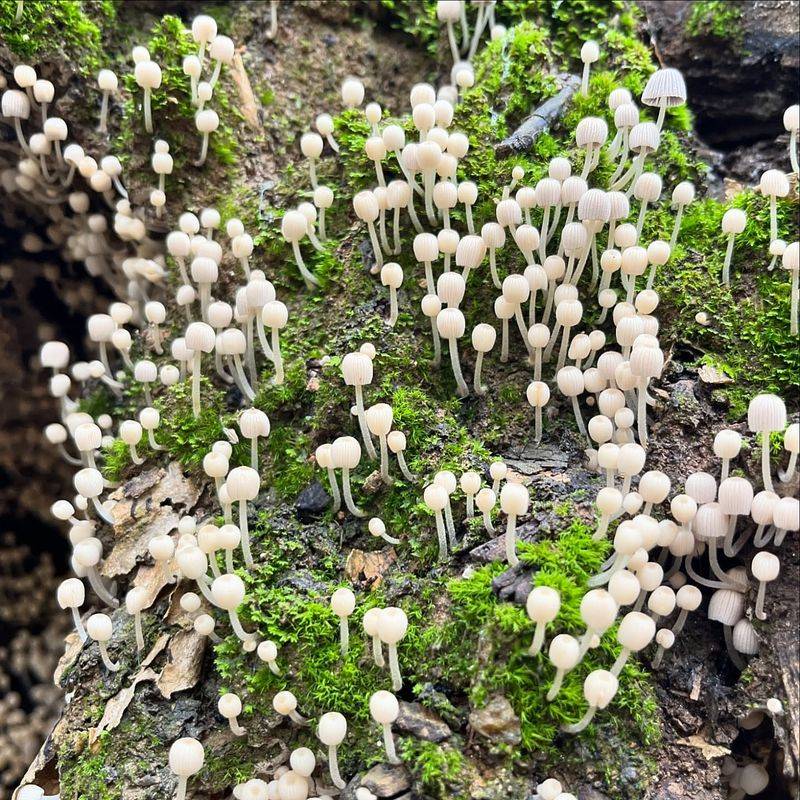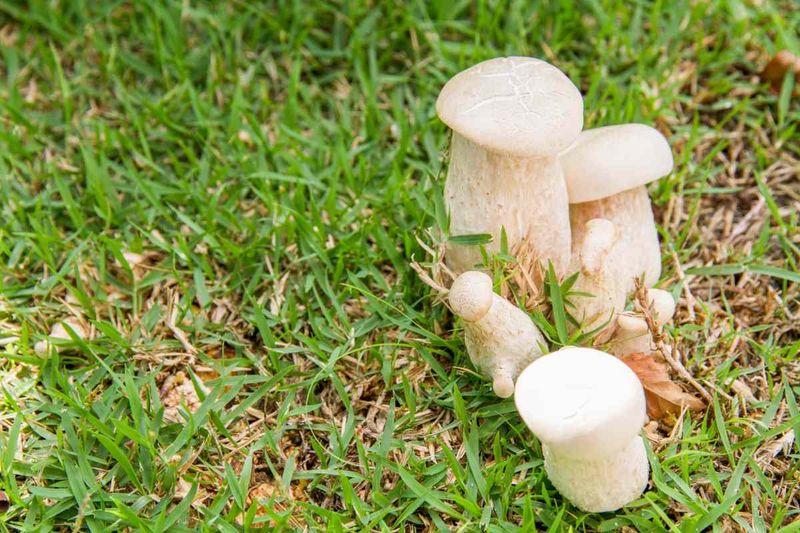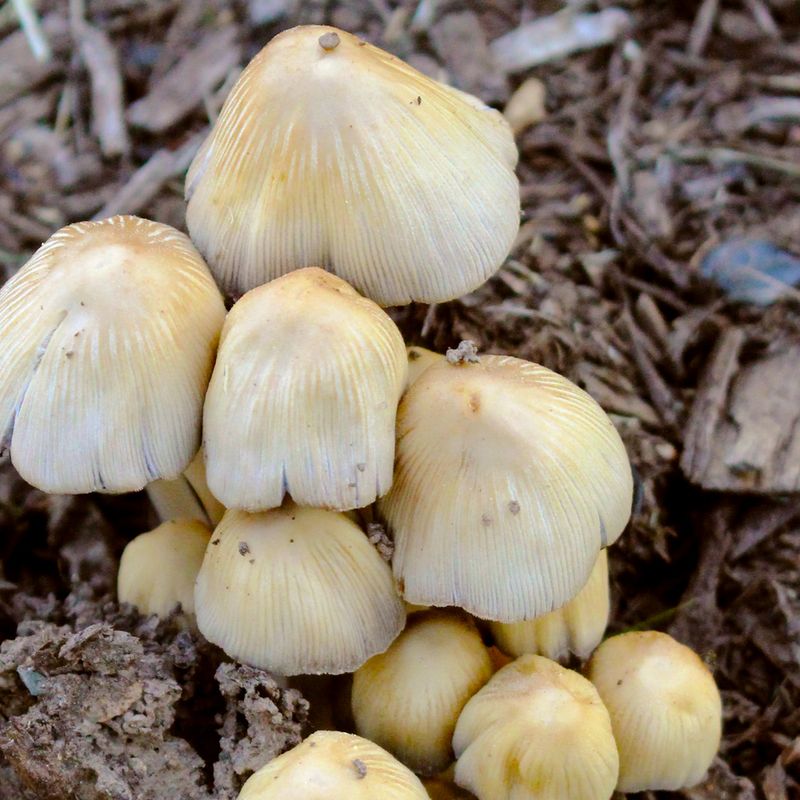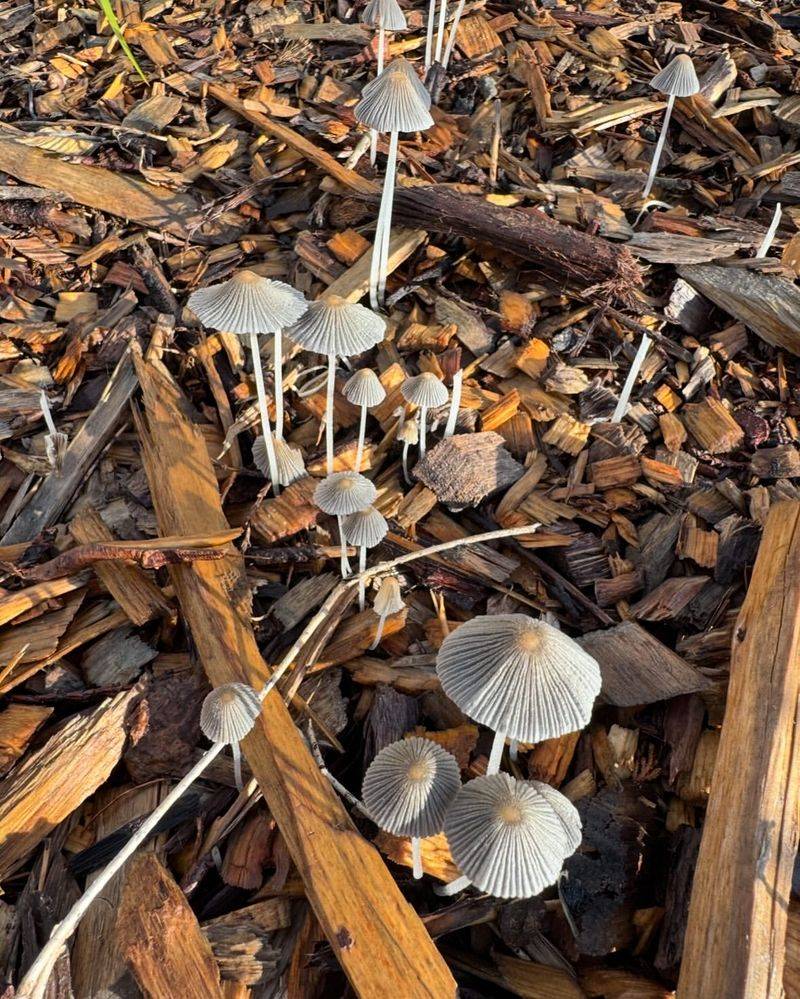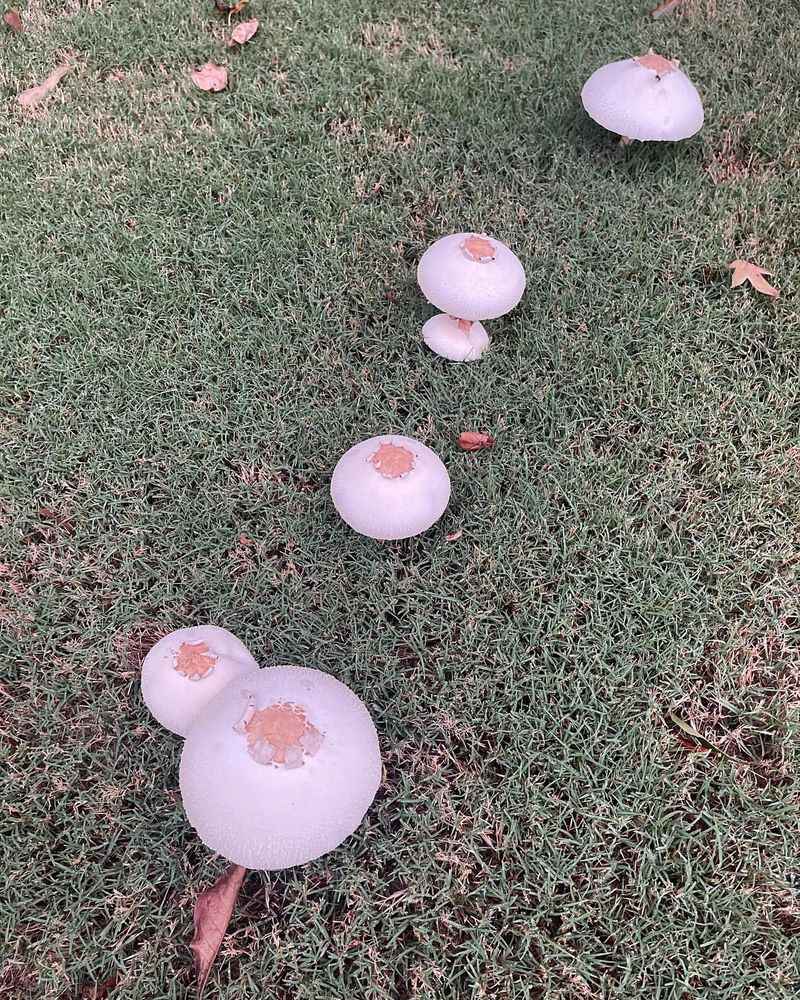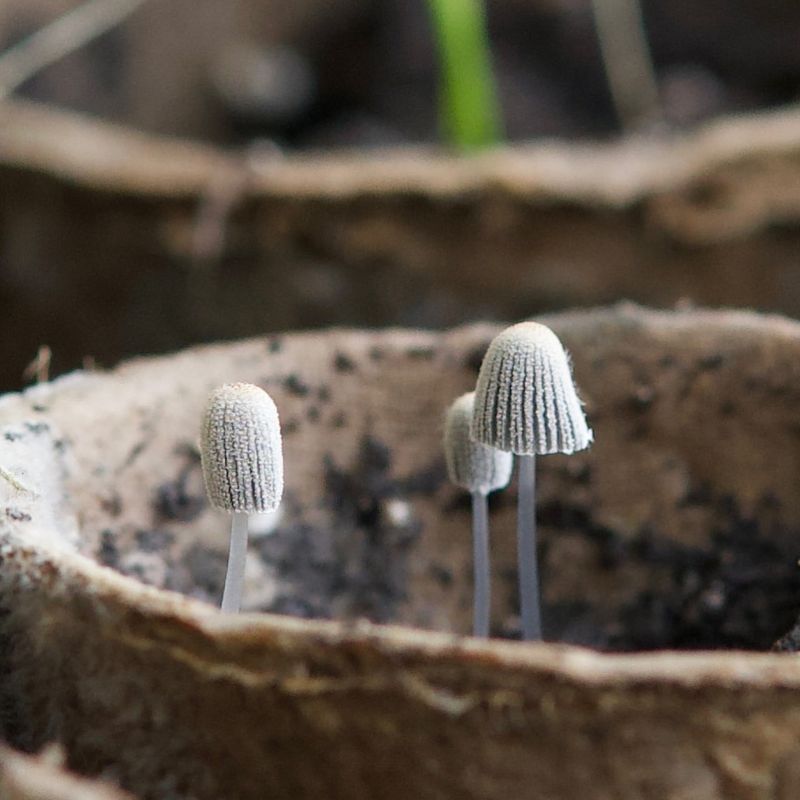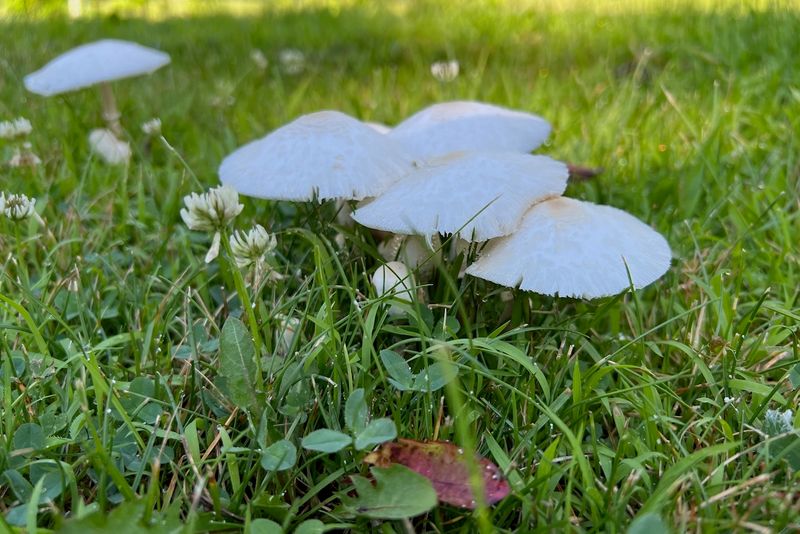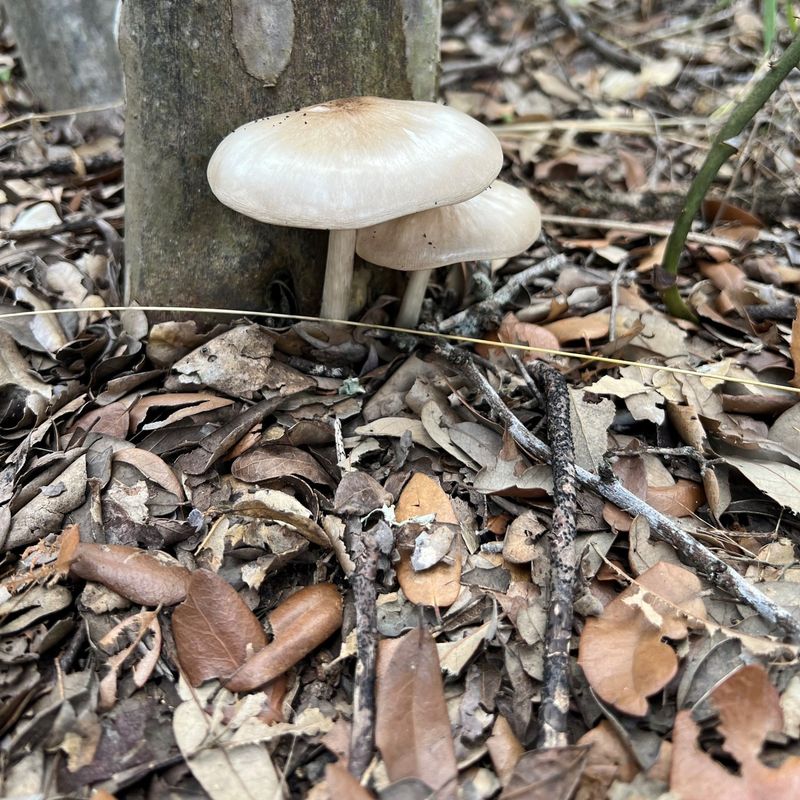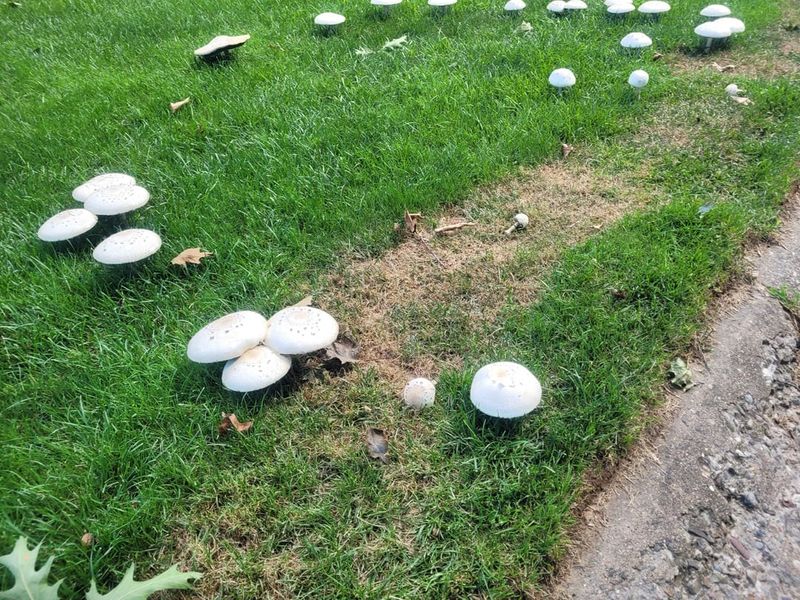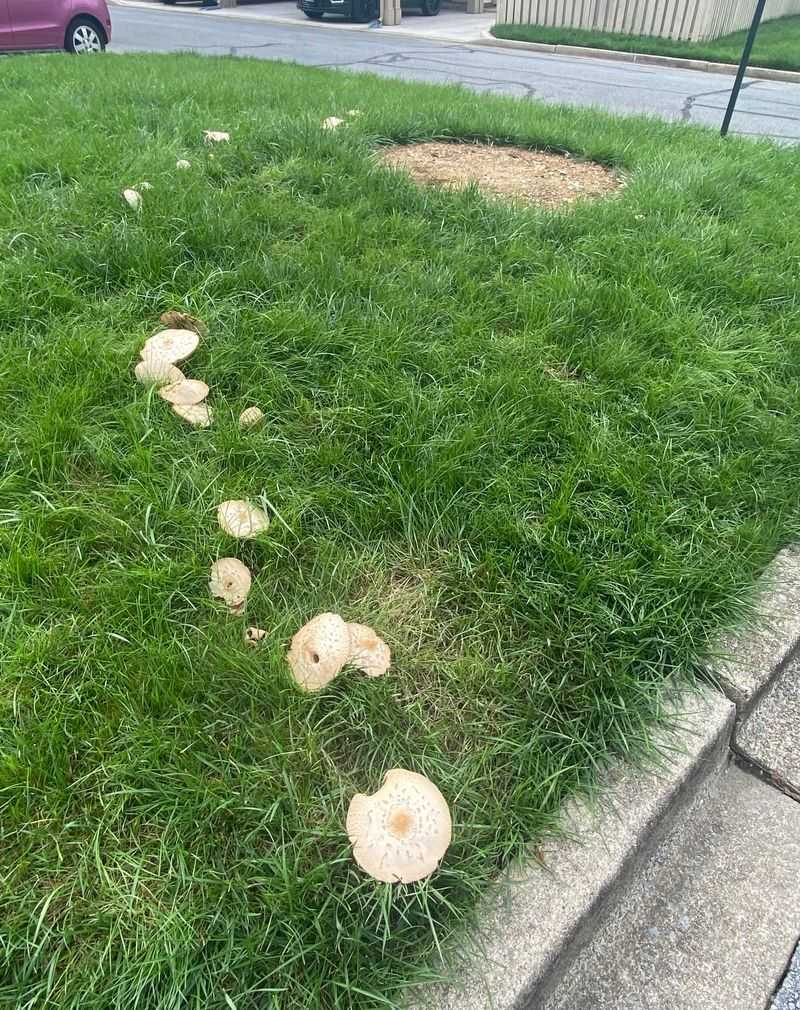Spotting clusters of white mushrooms scattered across your lawn might feel a bit mysterious—or even alarming at first. But these fungal guests aren’t here by chance. They’re subtle signals about the health and conditions of your soil.
Mushrooms thrive in moist, organic-rich environments, often appearing after rainfall or humid spells. Their presence can mean your yard has good microbial activity, which actually benefits plant life. So in many cases, they’re a sign of life below the surface.
That said, not all mushrooms are harmless or welcome. If they’re popping up excessively or near play areas, a little cleanup might be wise. Knowing when to act—and when to appreciate—is key to keeping your lawn balanced and healthy.
1. Your Soil Is Healthy And Alive
White mushrooms often signal a thriving ecosystem beneath your grass. They’re part of nature’s decomposition crew, breaking down organic matter into nutrients your plants can use.
I’ve watched patches of white mushrooms appear year after year in the healthiest parts of my garden. Their presence typically indicates good soil structure with plenty of beneficial microorganisms.
Rather than removing them immediately, consider them a sign that your yard has natural processes working properly. They’re helping recycle nutrients and improving soil quality without any effort on your part.
2. Buried Wood Is Decomposing
Those clusters of white mushrooms might be revealing hidden history beneath your lawn. Construction debris, old tree stumps, or buried lumber provide perfect feeding grounds for fungal networks.
The mushrooms you see are just the fruiting bodies of an extensive underground system working to break down woody material. This process can continue for years as the fungi slowly digest large pieces of wood.
In my yard, a ring of white mushrooms appeared where an old maple tree had been removed decades earlier. The stump was long gone from sight, but the fungi were still processing its remnants underground.
3. You’re Overwatering Your Lawn
Excessive moisture creates prime conditions for fungal growth. When white mushrooms suddenly multiply across your yard, your watering routine might be too generous.
Fungi thrive in damp environments where oxygen circulation is limited. Check your sprinkler system for proper timing and coverage – you might be creating the perfect mushroom nursery without realizing it.
During last summer’s drought, I actually saw fewer lawn mushrooms until I installed an irrigation system. Once regular watering began, the white caps returned within days, confirming the connection between moisture levels and fungal activity.
4. Tree Roots Are Struggling
White mushrooms clustering around trees might indicate root stress or decay. Certain fungi form relationships with struggling trees, sometimes beneficial but often opportunistic.
The fungal networks can spread through weakened root systems, eventually producing those visible mushrooms as they reproduce. Pay attention to the health of nearby trees when mushrooms appear in these patterns.
Last spring, a line of delicate white mushrooms traced the root path of our old oak. Within months, we noticed the tree showing signs of distress – a warning we should have heeded earlier when the fungi first appeared.
5. Your Yard Has Fairy Rings
Circular patterns of white mushrooms, known as fairy rings, indicate fungal colonies expanding outward from a central point. These rings can grow several feet wider each year as the underground mycelium searches for new food sources.
Folklore attributed these perfect circles to fairies dancing at night, but the science behind them is equally fascinating. The fungi actually change soil chemistry as they spread, creating visible rings in your grass.
Fairy rings in my neighborhood become neighborhood conversation starters every summer. They’re harmless in most cases, though some species can temporarily affect grass growth within their mysterious circles.
6. Your Mulch Is Breaking Down
Fresh mulch often hosts white mushroom blooms as the decomposition process begins. The fungi are simply doing their job – turning that wood mulch into nutrients for your garden.
Most gardeners notice these mushrooms appearing within days after spreading new mulch. The spores were likely already present in the mulch when purchased or quickly colonized the fresh organic material.
When white mushrooms sprouted throughout my newly mulched flower beds, my first instinct was concern. Now I recognize them as temporary helpers in the garden ecosystem, disappearing once they’ve consumed available nutrients.
7. Your Lawn Has Thatch Buildup
Excessive thatch – that layer of dead grass between soil and living grass – creates perfect mushroom habitat. When this organic material accumulates faster than it breaks down, fungi move in to help with decomposition.
The appearance of white mushrooms might signal it’s time for dethatching your lawn. A healthy lawn typically has less than half an inch of thatch, while anything more becomes problematic.
After years of neglecting proper lawn maintenance, white mushrooms appeared throughout my yard. A lawn care professional confirmed my suspicion – nearly two inches of thatch had accumulated, creating ideal conditions for fungal growth.
8. Your Soil Has Compaction Issues
Some white mushrooms prefer compacted soils where water pools on the surface. Their presence in high-traffic areas might indicate poor drainage and oxygen circulation in your soil.
Areas where children play, pets run, or vehicles park regularly are prime spots for soil compaction. The mushrooms appearing there are responding to the changing soil structure and moisture patterns.
Core aeration can help address both the compaction and the mushroom issue. By creating channels for water, air, and nutrients to penetrate deeply, you’ll improve soil health and discourage certain types of fungal growth.
9. There’s Animal Waste Enriching Your Soil
Certain white mushrooms thrive on nitrogen-rich deposits from pets or wildlife. If you’re noticing mushrooms in areas where animals frequently visit, their waste might be creating nutrient hotspots.
Dog runs and areas beneath bird feeders commonly develop these fungal patches. The concentrated nitrogen acts as fertilizer for both your grass and opportunistic fungi.
We discovered this connection when white mushrooms repeatedly appeared along our dog’s favorite backyard path. Changing his walking route and promptly removing waste helped reduce the mushroom occurrences in those specific areas.
10. Your Yard Has Beneficial Mycorrhizal Networks
Not all white mushrooms are decomposers – some represent beneficial partnerships with plants. Mycorrhizal fungi form symbiotic relationships with trees and plants, helping them absorb water and nutrients more efficiently.
These underground networks connect multiple plants, creating what scientists call the “wood wide web.” The mushrooms are just the visible reproductive structures of this remarkable system.
During a particularly dry season, I noticed white mushrooms near my strongest plants. Research suggested they were mycorrhizal species, explaining why those plants continued thriving despite drought conditions that stressed neighboring vegetation.
11. Recent Weather Changes Triggered Fruiting
Sudden mushroom appearances often follow weather shifts, especially rainfall after dry periods. The underground mycelium has been present all along, waiting for ideal conditions to produce its reproductive structures.
Temperature fluctuations combined with moisture create perfect fruiting conditions. That’s why you’ll often see mushrooms appear seemingly overnight following summer storms or autumn temperature drops.
The most dramatic mushroom display in my yard occurred after three weeks of drought ended with two days of gentle rain. Within 48 hours, white mushrooms appeared everywhere, demonstrating how quickly fungi respond to environmental cues.
12. Your Garden Amendments Are Working
Compost, manure, or organic fertilizers often trigger mushroom growth as they enrich your soil. The fungi help break down these amendments, making nutrients more available to your plants.
Many gardeners notice white mushrooms appearing shortly after applying organic materials. This temporary fungal bloom is actually accelerating the benefits of your soil improvements.
After spreading composted chicken manure across my vegetable garden, delicate white mushrooms appeared within days. Their presence confirmed active decomposition was underway, transforming that amendment into plant-available nutrition.
13. Old Leaves Are Decomposing Below Surface
Buried leaves from previous seasons provide perfect food for fungal decomposers. If you’ve mowed over fallen leaves rather than raking them, you might see white mushrooms appearing as this organic matter breaks down.
The fungi processing this material are performing valuable services, returning nutrients to your soil. Their presence indicates natural cycling of organic matter in your yard ecosystem.
One fall I experimented with mulching maple leaves directly into the lawn instead of raking. The following spring, small white mushrooms appeared throughout that area, visibly marking where the decomposition process was most active.
14. Potential Lawn Disease Developing
Some white mushrooms indicate fungal diseases affecting your turf. Look for other symptoms like discolored grass, thin patches, or unusual growth patterns accompanying the mushrooms.
Fairy ring disease, snow mold, and dollar spot all produce visible mushrooms along with damage to your lawn. Catching these problems early can prevent extensive turf restoration later.
When circular patches of dying grass appeared around white mushrooms in my front yard, a local extension agent identified fairy ring disease. Proper fungicide application and cultural practices prevented it from spreading throughout the entire lawn.
15. Your Lawn Has Natural Fungal Diversity
Different species of white mushrooms indicate biodiversity in your soil ecosystem. Various fungi perform specialized roles, from breaking down specific materials to forming relationships with different plants.
A yard with diverse mushroom species likely has healthy biological activity happening beneath the surface. This fungal community helps maintain natural checks and balances in your soil.
Over years of organic lawn care, I’ve documented at least seven distinct white mushroom types in my yard. Each appears in specific conditions and locations, evidence of a complex underground ecosystem supporting overall lawn health.



